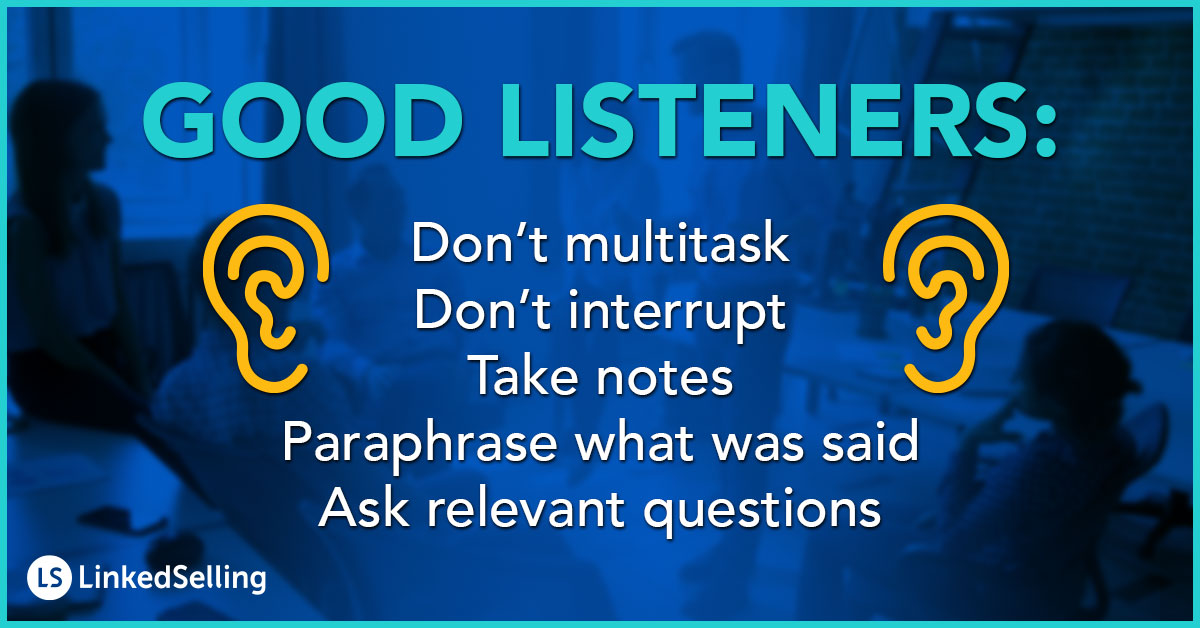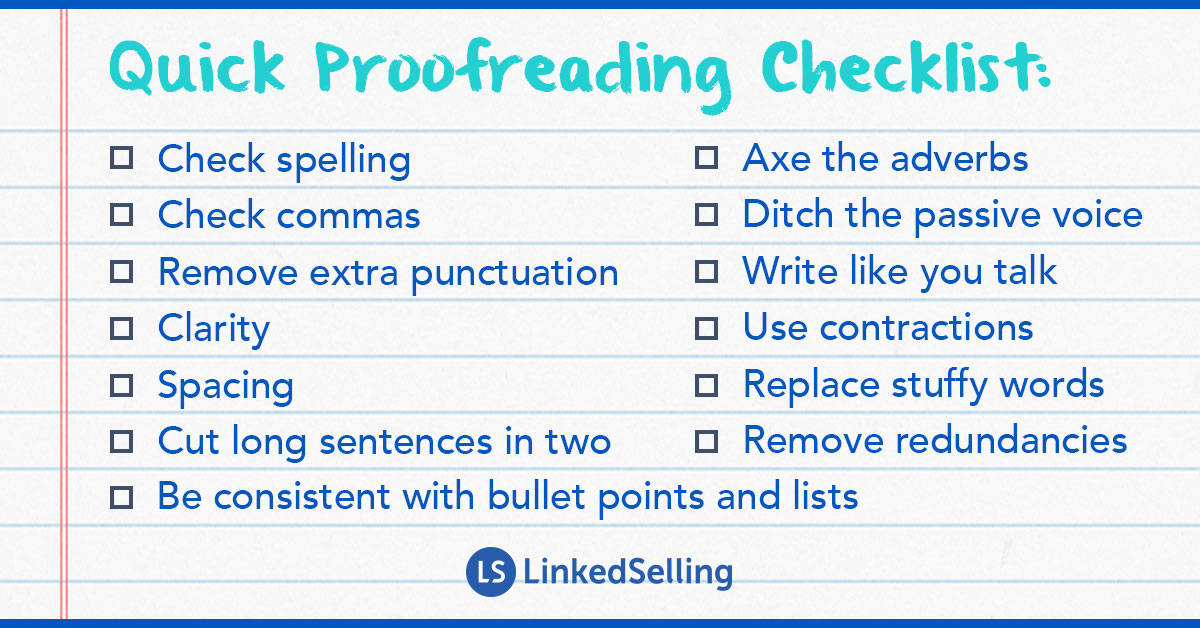Posted by LinkedSelling in B2B Lead Generation & Sales Development

At LinkedSelling, we believe that relationships are the bedrock of business. Tried and true. What will any relationship expert tell you about what makes relationships successful?
Communication matters.
The way you communicate with your prospects and clients says a lot about your company, how you see them, and what kind of relationships you intend to build with them. If you want clients who become advocates, who send you referrals, and who continually renew their contracts with you, take a deep look at how your team communicates with them - from before they become clients, to long after they sign on the dotted line.
One place to start is by considering incorporating a unified “voice” for your marketing and sales. I’m not talking about just branding or scripting out everything so that your team sounds like a bunch of robots. While we want our sales team to be personable, we also want to make sure that we use the same communication style across the board. Some basic terminology, an agreement on tone of voice, and agreeing upfront the best way to communicate certain concepts can go a long way to presenting a unified message across the company to your clients - and even encourage more sales.
This way you avoid common pitfalls and communication mishaps like:
- Misinterpretation
- Inconsistencies
- Ill-informed prospects
- Making promises we can’t keep
While guaranteeing:
- Uniform definitions for industry terms
- Less thinking about what to say our how to explain it (it’s already been thought out, with the best terms and words already chosen)
- More spent time on connecting with the prospect or client in an effective way
Today we’ll talk about how you can achieve a unified communication front and give you some real tips you can incorporate into your communication strategy starting now.
Communication Tips for Your Team

Whether writing a client email, speaking with them on the phone, or having an in-person conversation, you don’t want your team shooting from the hip. There are thousands of ways to say something, but some ways are guaranteed to work better than others.
For example, writing a good sales email is a significant challenge every sales organization faces. This may fall under sales enablement or marketing, but in my experience, the email messaging support for most sales teams is almost non-existent or it’s way off base.
Build out this dedicated function in your company or find 3rd parties to support you. Here are some tips to consider when developing a consistent messaging strategy:
Stick With A Specific Tone of Voice Across the Board
Remember that “It’s not what you say, but how you say it.” Although sometimes it may seem fickle, how you say something matters - and the words you choose to use matter. For example, as a business you can decide how personable you want to be, if you want to be professional yet approachable, understanding, engaged, firm, upbeat, or friendly, you can. Pick some words to help your team remember exactly what kind of voice to communicate in - and what kind of mindset they need to be in before communicating. Remember that it always helps to be friendly and personable, and like an old friend, show genuine interest in their concerns.
Thrive Leads Shortcode could not be rendered, please check it in Thrive Leads Section!
Choose Your Words Carefully
There are tons of ways to get things done. Some will be better than others - more effective and more impactful. The same with words; some are definitely better than others. Explore which terms your prospects and clients respond best to. A tip here: listen carefully to how they describe the problem in their own words. Their words can be your starting point.
Another point: As you might use your client’s words, do the same for the tone. If your clients are generally very formal and use a formal tone, then replicate that.
Prep Your A’s to Their Q’s
Kinda goes without saying, but you know what they’ll ask. Unless you want to flip flop everywhere, it makes sense to prep beforehand. Before you speak or meet with anyone, go through this list and be sure your team has decided on the right words to use and the right answers to give. You don’t need to sound like a robot reading off a script but it will certainly help to be prepared and at least know how to answer the questions.
Tip: When composing an email, try to save time and avoid any unnecessary back and forth by addressing questions they’ll probably have (before they ask them). It helps to reread your email once you are done drafting it and really ask yourself if you are being proactive and answering any possible questions that you can.
Test, Measure, Improve, Repeat

If you set your team up properly, you’ve dialed in on your overall messaging, you have strong SDR best practices in place, and you’ve chosen specific words and answers to use with your prospects and clients, when it comes to email, you create the ability to A/B test entire sequences, email messages, and subject lines. Run tests continually, just remember that subject lines and email messaging can get stale quickly. What’s working now may not be working in a few months. Continue to constantly reevaluate and keep improving, using the messages your sales team is already sending as your baseline test.
Be Positive! Never Say “No”
Here’s a trick - always say “Yes.” Nobody likes to hear the word “no,” so just avoid it at all costs. Is this even possible? Just try this: Always start with a positive expression, whether “yes” or “of course”, or at least, “I understand completely” and if you can’t give them what they want, and you’ve exhausted all other alternatives, at least phrase the “no” in a positive way - but start your answer with some version of “yes”.
For instance, if your client asks if you can complete a project by a certain date, and you can’t, instead of saying “no, I’m sorry but that won’t be possible,” say something like, “Yes, I can see why you’re aiming for that date, but I won’t be able to complete it by then. However, I can get it back to you in X amount of time. Will that work?” The way that you phrase things makes a world of difference. Or, another example, if you can’t give a full on “yes,” start your “No” answer with a yes like so, “Yes absolutely, I’d love to be able to give that to you. Let me see what I can do,” or “”Yes, I can see why that would be a concern, here’s what we’ll do.”
When a customer has a complaint or concern, prove to them that you’re listening, that you understand and that you are willing to help them alleviate their situation. Saying yes puts you on their side. Grant Cardone, one of today’s most effective (and well known) sales experts puts it perfectly, “avoid words like no, not, never, can’t or won’t. It’s almost impossible to get the client to agree while disagreeing with them.”
Listen
The best conversationalists don’t actually speak that much - they listen. There’s a difference between hearing and listening. When someone else is talking, are you really taking in what they are saying or just thinking about what you’re going to say next? Check yourself! You need to really listen in order to understand your prospect’s pain points, why they’re talking to you in the first place, and what they really need. (Sometimes the reasons they give on the surface aren’t actually the real reasons they’re looking for your services. Listening carefully helps you find them.)
Some tips: Don’t multitask (give the other person your full and undivided attention). Don’t interrupt. And definitely take notes. And when the person is done speaking, paraphrase what was said or ask relevant questions to show you heard and understand.

Be Consistent
You also want to make sure that you are consistent in your messaging and the way that you communicate with your clients. From their very first interaction with you, your clients will develop certain expectations. If you are friendly and concise the first time around and then come off as stand-offish and garrulous the next, your client will inevitably be a bit thrown off.
We forget that our clients and prospects often engage with many different people throughout the company, so having a consistent tone of voice, word choice, and attitude towards the relationship is extremely helpful.
Think about your brand image, values and how you want to be portrayed. Make sure that your team is all on the same page and that you are all presenting yourself in a similar fashion.
Make Things Easy to Read
I got four letters for you: SKIM. When possible make your communications skimmable. Your goal is to make things easy to read, so pay close attention to the formatting.
To make your message more readable:
- Create lists or bullet points whenever possible
- Bold important words or phrases
- Use ample spacing throughout (nobody wants a wall of text - it won’t get read!)
Be Clear and Concise
Speaking of a wall of text… if your emails are concise, you avoid the wall all together! It’s not just about making it easy (and inviting to read), it’s also to be conscious of your prospect’s time - they don’t have all day to read your stuff. They don’t have time to try to interpret an email that you send them or a long, convoluted voicemail that you leave them. So don’t be vague. Be as clear and specific as possible in your delivery. And don’t be verbose. Cut to the chase and say what you have to say in as few words as possible. (This can be harder than it seems - which is why it pays to prep a little beforehand by knowing which words are most impactful ahead of time.)
Also, part of number 6 and 7 is just making things easy for the client - they’ll have questions, you can anticipate them. You want them to take an action - make it obvious what they need to do - and make it easy to do it! You have a meeting planned, share ahead of time what you’ll be talking about, especially if you have questions for them.
Thrive Leads Shortcode could not be rendered, please check it in Thrive Leads Section!
Manners Matter, Of Course
When was the last time you said thank you to someone in passing? When was the last time someone said thanks to you… even if you were just doing your job? It feels good right? Have you ever worked with a company where across the board, they were just extremely polite? It’s that kind of consistency that gets remembered. Please and thank you.
Ask Questions as Needed
Don’t forget to ask questions - and to come prepared with questions to ask. This will not only help to avoid confusion between you and your prospects or clients, but asking questions also shows curiosity, engagement, and trust; it shows that you care. Chances are, your clients will appreciate it.
Don’t Forget Non-Verbal Cues
Verbal and written communication isn’t the only thing that matters—non-verbal communication is just as important. When you’re talking with your client in-person (or via Zoom these days), remember that from our handshakes to our hairstyles, nonverbal details reveal who we are and impact how we relate to other people. So take note… How’s your posture? How’s your body language? Are you making eye contact? Are you open or closed? Defensive or welcoming?
Use the Recap
To avoid miscommunication (and costly mistakes!) always recap what you understood. Sometimes you might understand something that your prospect or client didn’t intend.
So whether you’re wrapping up a meeting with a client or responding to an email, again, make it easy and summarize the main points. You get a twofold benefit here: you avoid a misunderstanding, which could be costly down the road, especially if you’re negotiating a project, and you build trust by taking the extra step to make sure you’re on the same page.
Last But Not Least: Proofread
Always give your communication another look through. Another set of eyes helps too. While it’s not the end of the world, sending out communication with typos and errors can undo a lot of the credibility and trust you’ve built up to this point. It’s worth the extra minute to make sure that everything you send out is error-free.

Consolidating Your Communications Strategy
The way that you communicate with your clients can determine whether those relationships are long-lasting or short-lived. So be intentional and make sure that your teams are all on the same page as to what kind of tone and language you’ll be using. The best way to incorporate all these tips and communicate them to your team is to develop a document, similar to a “brand guidelines” document to use as a checklist.
Thrive Leads Shortcode could not be rendered, please check it in Thrive Leads Section!
